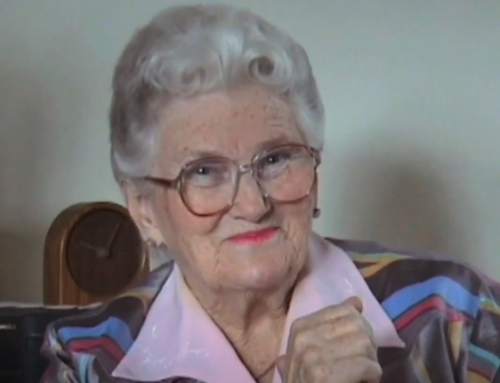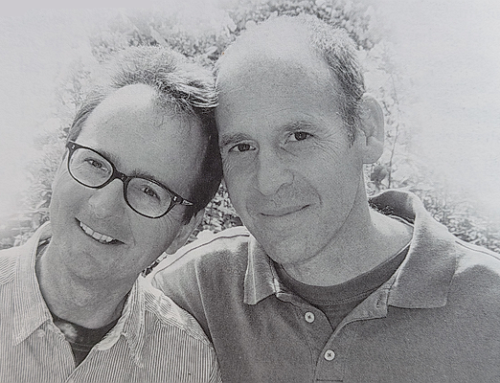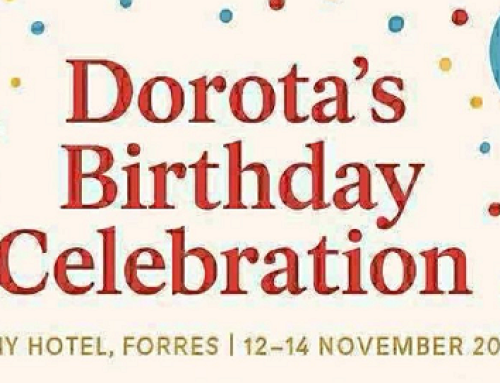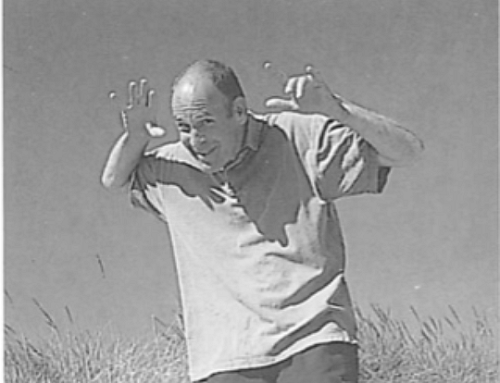This Topic is the fourth in a series of ‘Reader’s Digests’ bringing together facets relating to ecological and sustainability issues. We consider these to be a physical manifestation of the spiritual dimensions informing the work of our community, Ecovillage Findhorn.
In the first topic of this series, The Park Ecovillage Findhorn – Early Conferences (1976-1995), we looked at early pioneers of the environmental movement, such as E.F Schumacher, who visited Findhorn and brought their influence to bear on its development. The second topic in the series, Developing a Planetary Village (1982 – 1995), looked at how the spiritual and sustainable ecological dimensions at work here led to the emergence of a ‘planetary village’. The third topic, Ecovillage Findhorn: In the World (1995-2024), explores the impact Ecovillage Findhorn has had so far on sustainable environmental issues in the UK and across the world, through networks, education and work on the ground. In this fourth summary post we track the evolution of the settlement through the different Tours of the Park. The fifth is Ecovillage Findhorn: Nature, Ecology and Biodiversity.
***
The Park Ecovillage is where the roots of the community have grown deep since the arrival of Eileen and Peter Caddy with their family and Dorothy Maclean on 17th November 1962. Eileen’s guidance told her early on that this place would be growing from family, to group, to community, to village and to a vast city of light. (This was represented in the video created for the 62nd birthday in 2024.)
It is here where the three guiding principles are put into practice and made visible on the physical level. They underpin our vision of creating sustainability, on all levels, in a human settlement which is in harmony with nature, expresses a deep care for the Earth, and takes responsibility for our impact on our environment.

From the early beginnings of aspiring to be a Planetary Village, experimenting with innovative architecture and technologies, to being one of the first ecovillages in the Global Ecovillage Network, we continue to evolve in our endeavour to live up to this vitally important expression of care and responsibility. Of course we never attain perfection as there is always more to do, so change is the only constant. Sharing our journey with our visitors and the world is a joy and a privilege, and is just one aspect of our educational work.
Guided tours of the Park are a central aspect of this, showing people around our ‘home’, talking about the achievements, failures and aspirations, and giving glimpses and flavours of what it means to live in a spiritual community committed to sustainability on all levels.

Park tours have evolved over the decades and yet, in principle, have stayed the same: a community member welcomes the visitors and takes them on a walking tour, sharing their personal views about community life and history. This experience can be as transformative today as it has been all through the years.
To allow for greater flexibility and access, the community has created a Visitor Guide describing a self-guided tour. With the links given in this post you can take this tour from the comfort of your own home. You can also ‘walk’ through the changes in time.
Of course, this is not the same thing as an immediate personal experience and we hope that you may be inspired to stop by for your own Tour of the Park when you are in Scotland, whether for the first time or to see what has changed since you were last here.
***
Guided Tours to the Park
If you arrived in the early days of the 1970s it would have been most likely Peter Caddy who took you around and showed you the relevant community places.
Lark Batteau remembers “Earlier that year I heard him [Peter] giving his usual animated talk to some visitors. He told them stories about people and things miraculously manifesting just when they were needed. He explained that all things would work out for the community because we were living according to God’s Plan.”
Marilyn Barry who arrived as a visitor in 1971 remembers buying photographs sold by the community.
- 1971 Community Centre photo Findhorn Community bought by Marilyn Barry during a visit
- Original Caravan, Sanctuary and surrounding buildings
- Cedarwood bungalows and garden
Over time the community received more and more visitors and structures emerged to facilitate a meaningful experience.
The Visitor Centre opened in 1995 in the Lower Foyer of the Universal Hall. In 2002 the Visitor Centre moved to the building that housed the public toilets where Eileen went at night to find peace and quiet for her meditations. It is still situated there today.

It is open from Easter to the end of October with variable opening hours, depending on the month. Tours are usually scheduled to start at 2pm and can be booked in advance or joined on the day.
There is also the option of tailored group tours and many different groups have come to know the Park Ecovillage that way. Some of those tours contribute a palpable energy to the Park on the day of their visit. Imagine the excitement and buzz when 30 university students walk around as part of a field-trip to enhance their studies, bringing their questions, their inspiration and their creativity, or when a group of local school children arrive on their bicycles to learn about our ecological lifestyle. There have also been architects, city-planners, local ‘active living groups’ and many more, experiencing a day in the Park Ecovillage.
The experience of a guided Park Tour is of course shaped by the guide, their personal perspective and experience as a community member. Over the years we have had many iconic guides, each adding their own flavour and flair.
One of those was Richard Coates who ‘focalised’ the Visitor Centre for 10 years. An amazing coincidence, we could call it a miracle 😊, provided us with a real life record of a tour he gave in 2008. A participant on the tour filmed it and put it up on YouTube – in three parts, annotating the number of interruptions caused by a plane flying overhead from the nearby Royal Air Force base in Kinloss. Click here to share in this ‘reality TV’ experience – an unredacted glimpse of community life.
Self-Guided Tours
To provide more flexibility and to allow visitors to experience the Park Ecovillage at times when the Visitor Centre is closed, a Visitor Guide has been published which contains essential background information and a self-guided tour around the Park.
 The first Visitor Guide was called Sights&Insights published in 1995. It was compiled by Cally and Harley Miller and beautifully designed using Harley’s drawings depicting the many different community places it described. It is also an excellent snapshot of the expansion of the community beyond the core of the Findhorn Foundation. The Park had evolved to be the home of community enterprises and homes of community members, sitting side by side with Findhorn Foundation facilities, as well as guest and staff accommodation.
The first Visitor Guide was called Sights&Insights published in 1995. It was compiled by Cally and Harley Miller and beautifully designed using Harley’s drawings depicting the many different community places it described. It is also an excellent snapshot of the expansion of the community beyond the core of the Findhorn Foundation. The Park had evolved to be the home of community enterprises and homes of community members, sitting side by side with Findhorn Foundation facilities, as well as guest and staff accommodation.
From 2002 onwards, the Visitor Centre, operated by the Findhorn Foundation, revised that initial Visitor Guide regularly. Click here for the 2019 edition created by Richard Elen, with the support of Dürten Lau, based on previous editions and with an updated Park Map. Also in the post are Richard’s subsequent updates from 2021 and 2023 that honour the big changes which took place due to the fires which destroyed the Sanctuary and the Community Centre on 12th April 2021, as well as the post-pandemic changes in the organisational structure of the Findhorn Foundation.
In 2022 the Community Association, New Findhorn Association (NFA), took on the running of the Visitor Centre and is presently revising the Visitor Guide for the 2025 season. It will be available from the Visitor Centre and the Phoenix Shop.
Eco-Tours
Sustainability became a tangible expression of the spiritual principles, Inner Listening, Love in Action and Co-creation with the Intelligence of Nature. This led to many different experiments and innovations which drew a lot of public interest over the decades.

Original garden, early community.
Before the concept of sustainability had become a mainstream value, the community became famous in the 1960s for its garden. It, of course, also fulfilled sustainability objectives, in a very practical way, feeding the early community and laying the groundwork for a lifestyle in harmony with the natural environment.

Left: Lyle Schnadt checking a solar panel Middle: Nimrod over Moya image Patrick Nash Right: Bagend cluster
Experiments in innovative technology saw solar thermal panels from Weatherwise (later AES) from the mid 1980s, the erection of the first wind turbine Moya in 1989, ‘Simply Build Green’ homes from 1990, the Living Machine in 1995, low ecological footprint neighbourhoods and a Green Burial Ground.

Moonlight Ecomobile photo Cornelia Featherstone
Taking advantage of our legal status as a caravan site, we experimented with eco-mobiles, taking the ‘Tiny House living’ practised in the caravans of the 1970s into greater sustainability. Tiny Houses still offer powerful solutions for many people all around the world. Our ‘homegrown’ building company, Greenleaf Design & Build founded by Jason Caddy, the grandson of Eileen and Peter Caddy, continues to push the envelope to build ever more sustainable housing.
As this aspect brings a lot of visitors to the Park Ecovillage, specialised tours were designed to explain the many different sustainability features of the settlement. John Talbott, who many would describe as the mastermind of the ecovillage, put the first Eco-tour together in 1995. This has been updated several times to reflect any new developments that have taken place in the ecovillage.
For the 60th birthday of the community in 2022 a major overhaul of the guide resulted in a self-guided audio tour with 68 stops. Click here to enjoy this tour virtually or in person. Given the many changes which occur in the community, the tour was out-of-date as soon as it was completed. Nonetheless it gives an excellent detailed description of the Park Ecovillage.
Roger Doudna, of whisky barrel house fame, who has been an educator in the community since the early 1970s, says,
“Our eco legacy is something of which we can be legitimately proud,
and on which we have been truly ‘educational’.”
***
This summary has not referenced all the different stories which are already up on the website relating to this Topic. And of course we hope to add many more as time goes by. Click here for all the stories we have tagged as relating to Park Tours.
***
This Topic is the result of a collaborative effort of many, compiled by Cornelia Featherstone. Our thanks go to John Talbott, Samantha Graham, Roger Doudna, Richard Coates, Richard Elen, Marja Kuijer, India Brown, and Linda Chorlton.
Photo credits: Findhorn Foundation unless stated

Inspired by CommUnity, a group of NFA volunteers, manages this website. Hearing each others stories, and learning about the history of this community can help us all to find more cohesion and a sense of belonging. Read more.<















Leave A Comment